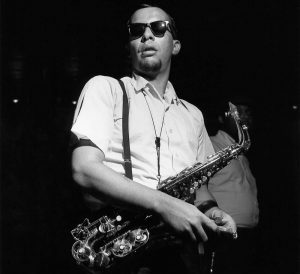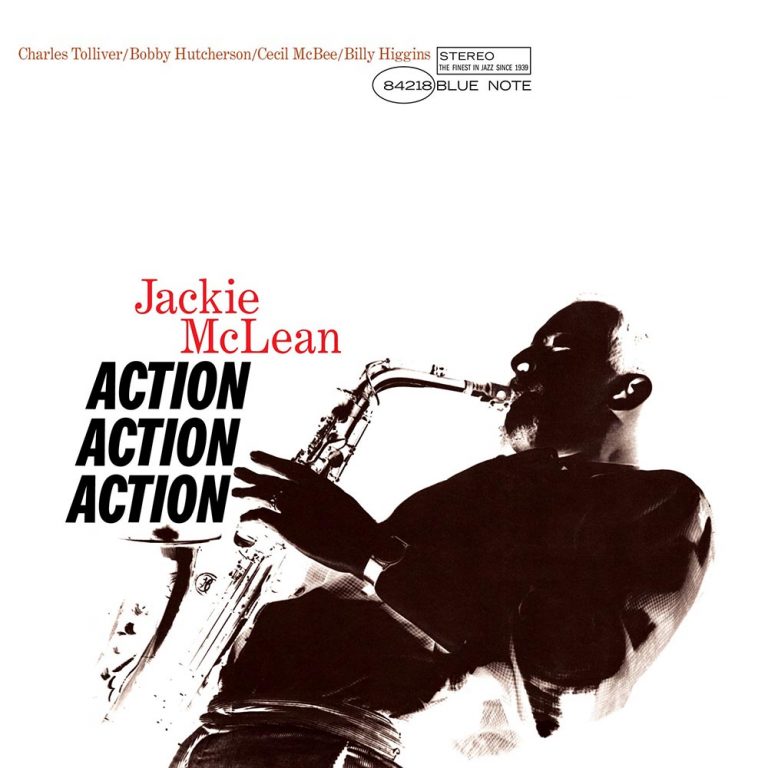In his original liner notes for Jackie McLean’s Blue Note album, “Action,” writer Nat Hentoff quotes the alto saxophonist claiming: “I never want to go ‘outside’ for too long a time without coming back ‘inside’ again.” It stands as a perfect indication of the kind of territory McLean was investigating in the mid-1960s – an aesthetic abundantly clear on “Action,” on which, as Hentoff adroitly observes, “while he continues to explore new directions, he is also clearly rooted in the fundamentals.”
Recorded in September 1964 (though not released until 1967) “Action” came two years after McLean’s landmark recording “Let Freedom Ring,” on which he first began to negotiate the ‘inside’/’outside’ dichotomy by incorporating elements of modal and free jazz into his well-established hard bop sound.
For sure, “Action” still tips its hat respectfully to McLean’s bebop roots, most notably in his reading of the standard “I Hear A Rhapsody,” which he had heard his great alto inspiration Charlie Parker play in the early 1950s. With its sweetly predictable head and sauntering pace, it seems like a throwback to a more innocent milieu, while McLean’s solo is bursting with an unmistakably Bird-ish melodic agility, crammed full of split-second spurts and leaps.
McLean’s composition, “Hootnan,” has one foot in recent tradition too – a heads-down, no-nonsense, mid-tempo, hard bop belter on which McLean blows with mercurial imagination, flicking out impossibly fleet runs that somehow always end in lyrical, blues-based hooks. Yet, here, we can also hear McLean straining to break free.
Check the astonishing moment mid-solo when he jettisons melody altogether, ascending into an intense altissimo shriek clearly influenced by Albert Ayler’s ground-breaking free jazz classic, “Spiritual Unity,” recorded just a few months earlier.
But McLean’s restless probing of the outer limits is nowhere more apparent than on the album’s title track, another McLean original. After a brief, arresting head of staccato horn stabs and militaristic snare cracks, it launches into a relentlessly hurtling, up-tempo sprint entirely free of chord changes. It’s exactly the same style of harmonically liberated yet rhythmically insistent free-bop Miles Davis was then exploring with his Second Great Quintet, calling it “time no changes” – itself an extension of Ornette Coleman’s great innovations at the end of the 1950s that opened the door to free jazz.
Reid Miles’ stunning cover for “Action” is the perfect accompaniment.
While McLean’s mid-60s albums such as “It’s Time!” and “Destination…Out!” inspired some of Miles’ most kinetic designs, here the synergy is breathtaking. The word ACTION appears three times, stacked up in bold upper-case letters, as though issuing from the bell of McLean’s horn. McLean himself is caught mid-blow, leaning back, eyes clamped shut in concentration, in a black and white photo reversed into startling negative. The energy is almost palpable, entirely capturing McLean’s questing search for the shock of the new. Sixty years on, his music still sounds like horizons exploding.
Read on… Jackie McLean’s Demon’s Dance
Daniel Spicer is a Brighton-based writer, broadcaster and poet with bylines in The Wire, Jazzwise, Songlines and The Quietus. He’s the author of a book on Turkish psychedelic music and an anthology of articles from the Jazzwise archives.
Header image: Jackie McLean. Photo: Francis Wolff / Blue Note Records.



